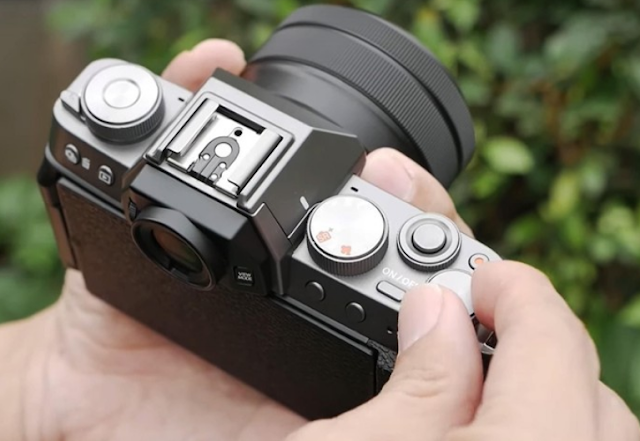Fuji X-T200: A friendly photography and videography
The Fuji X-T200 camera is a camera designed as a camera that bridges between beginner and more advanced photographers. The camera has advanced features, but is packed in a compact and friendly form for beginners both for photography and also videography.
As the successor of the X-T100, the X-T200 had some changes, most notably the screen which is now larger, which is 3.5 inches and can be rotated sideways and in any direction (articulating screen). This screen can also be closed inside when not in use. This touch screen includes a large screen, similar to the Fuji X-A7.
At the top of the camera (its top plate), there is a fashion wheel, and two dial wheels to change the setting. Two dial wheels are on the right side of the camera, unfortunately a bit tight/drag so it's hard to turn around with one finger. Perhaps, it was Fuji's effort that the two dials were not easily rotated on purpose. But as you use, this dial can also be more loose.
The camera's autofocus system is advanced, the equivalent of a Fuji camera whose class is more like X-T30 and X-T3. This autofocus system can track the face and eyes even if the subject distance is a bit distant (3-4 meters).
All this thanks to its focal point or area that reaches 425 points with phase detection technology. In practice, the autofocus performance will depend on the lens motor speed, as not all of the motor Fuji's fast-focus lenses are.
For the video, the camera is sophisticated. The Fuji X-T200 can record 4K resolution videos without cropping. There is a new feature of this camera that is Digital Gimbal, which utilizes a gyrosensor to predict hand vibrations in order to produce a more stable video. However, this mode has a weakness, i.e. the autofocal is often hunting and slow.
On the photography side, this Fuji camera has an interesting simulation film that color and contrast imitating Fuji movies in the past, such as Provia, Velvia, Astia, Pro Neg, and so on. But unfortunately, recent simulation films such as Classic Negative, Acros (B&W) and Eterna (for video) do not exist yet.
In the opportunity to test the smaller photo quality of Fuji X-T200, I use Velvia simulation film to strengthen the city's colours at night.
Source: Zbtechs.com
As the successor of the X-T100, the X-T200 had some changes, most notably the screen which is now larger, which is 3.5 inches and can be rotated sideways and in any direction (articulating screen). This screen can also be closed inside when not in use. This touch screen includes a large screen, similar to the Fuji X-A7.
At the top of the camera (its top plate), there is a fashion wheel, and two dial wheels to change the setting. Two dial wheels are on the right side of the camera, unfortunately a bit tight/drag so it's hard to turn around with one finger. Perhaps, it was Fuji's effort that the two dials were not easily rotated on purpose. But as you use, this dial can also be more loose.
The camera's autofocus system is advanced, the equivalent of a Fuji camera whose class is more like X-T30 and X-T3. This autofocus system can track the face and eyes even if the subject distance is a bit distant (3-4 meters).
All this thanks to its focal point or area that reaches 425 points with phase detection technology. In practice, the autofocus performance will depend on the lens motor speed, as not all of the motor Fuji's fast-focus lenses are.
For the video, the camera is sophisticated. The Fuji X-T200 can record 4K resolution videos without cropping. There is a new feature of this camera that is Digital Gimbal, which utilizes a gyrosensor to predict hand vibrations in order to produce a more stable video. However, this mode has a weakness, i.e. the autofocal is often hunting and slow.
On the photography side, this Fuji camera has an interesting simulation film that color and contrast imitating Fuji movies in the past, such as Provia, Velvia, Astia, Pro Neg, and so on. But unfortunately, recent simulation films such as Classic Negative, Acros (B&W) and Eterna (for video) do not exist yet.
In the opportunity to test the smaller photo quality of Fuji X-T200, I use Velvia simulation film to strengthen the city's colours at night.
Source: Zbtechs.com



Komentar
Posting Komentar